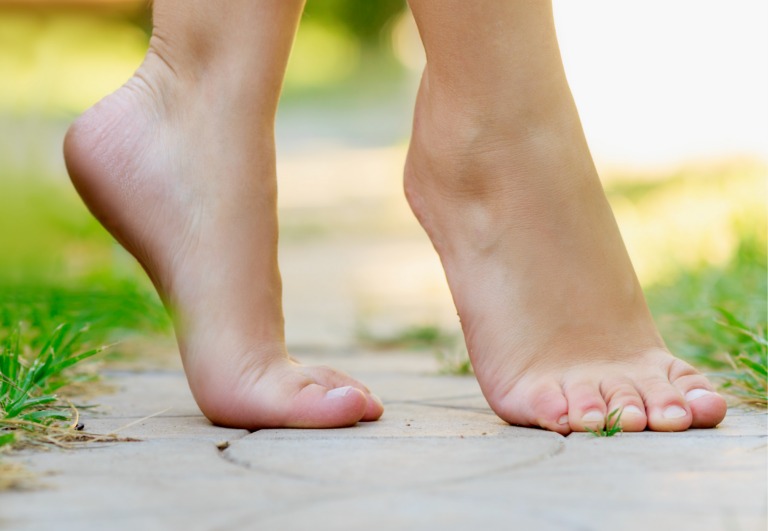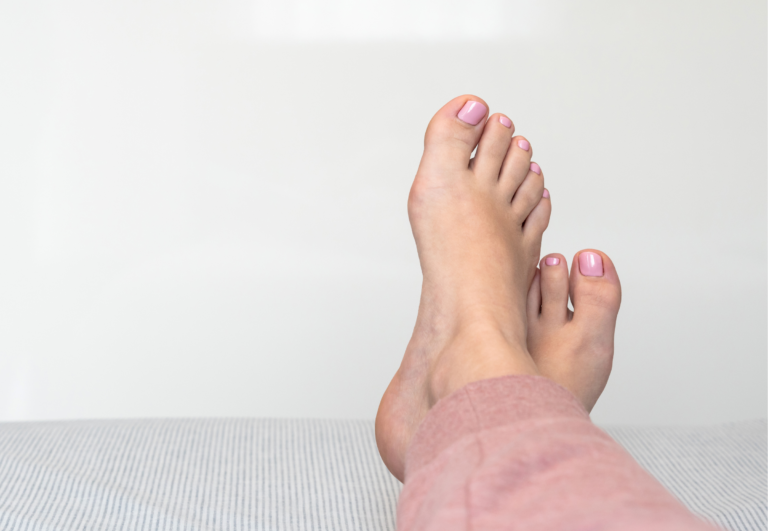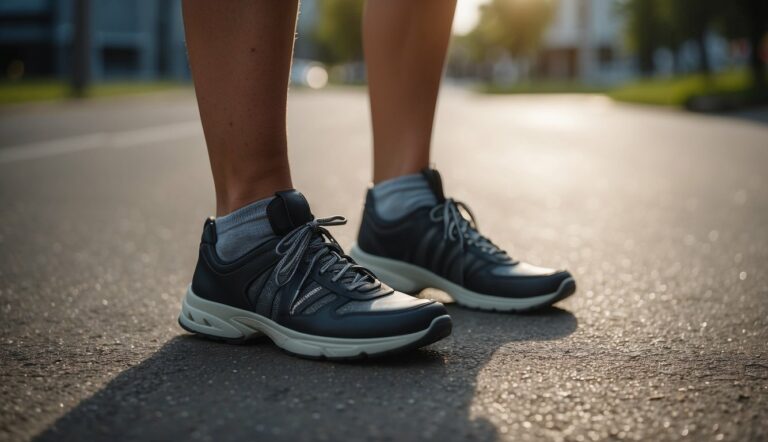How Toe Spacers Can Help with Foot Deformities: Exploring the Potential Benefits
I’ve found that toe spacers offer a simple yet effective solution to various foot deformities. They work by separating the toes, which can alleviate the pain and discomfort associated with conditions like bunions, hammertoes, and claw toes. My experience has shown me that these spacers can provide not just immediate relief from crowding but also help in the prevention of further toe misalignments.
For individuals with toe deformities, toe spacers can be a source of significant comfort. By realigning the toes into a more natural position, the spacers reduce pressure and friction. This is particularly beneficial for people who spend a lot of time on their feet or who frequently engage in activities that put strain on their feet.
The benefits of using toe spacers extend beyond comfort; they can also contribute to better balance and overall foot health. Having the toes spread apart promotes a more stable base of support, which can enhance one’s gait and potentially reduce the risk of falls. Regular use of toe spacers as part of a comprehensive foot care routine can play a crucial role in maintaining foot health and preventing future deformities.
How Toe Spacers Can Help with Foot Deformities
Toe spacers can be a useful non-surgical tool in managing and potentially improving various foot deformities by addressing the alignment of the toes and the distribution of pressure across the foot.
Here’s how toe spacers can help with foot deformities:
- Correct toe misalignment: Toe spacers can help realign the toes to their natural position, which can alleviate and prevent deformities such as bunions, hammertoes, and claw toes.
- Reduce pressure on the toes: By separating the toes, spacers can decrease the pressure that contributes to the development and exacerbation of deformities.
- Encourage proper toe splay: Proper toe splay can lead to a more natural foot function, which can prevent the progression of existing deformities and the development of new ones.
- Improve balance and stability: Well-aligned toes contribute to better balance and stability, which can reduce compensatory movements that might worsen foot deformities.
- Support muscle strengthening: By allowing the toes to spread, toe spacers can encourage the strengthening of foot muscles, potentially preventing or correcting deformities caused by muscle weakness or imbalance.
Causes and Types of Foot Deformities
In this section, we’ll tackle the common causes and symptoms of foot deformities, and understand why they can significantly impact our overall foot health.
Foot deformities develop due to various causes and can manifest as several types, including bunions (hallux valgus), hammertoes, and overlapping toes. One leading cause is wearing ill-fitting shoes that crowd the toes, leading to conditions such as calluses, corns, and deformities. Additionally, arthritis, a condition affecting the joints, can lead to deformities when it involves the feet.
- Bunions: Misalignment of the big toe joint.
- Hammertoes: Abnormally curved toe joints.
- Overlapping Toes: Toes that overlap or underlap.
Genetic factors can also predispose individuals to certain deformities, coupled with lifestyle factors like standing for long periods.

Common Symptoms and Issues
The symptoms associated with foot deformities are typically the first indicators that suggest an underlying issue. Common symptoms include pain, swelling around the affected area, and difficulty with footwear due to altered toe shape. These symptoms can lead to a decreased quality of life due to the pain and mobility issues associated with them.
- Pain and Swelling: Often around joints or where there’s toe crowding.
- Shoe Fit Problems: Difficulty finding comfortable shoes to accommodate the deformity.
Long-term complications of untreated deformities may include reduced balance and an increased risk of falls, as well as an exacerbation of issues like arthritis.
Design and Material of Toe Spacers
Selecting the right toe spacers is crucial for comfort and effectiveness. I’ll guide you through the materials and design features to consider for optimal foot care.
Silicone vs Foam and Gel
Silicone Toe Spacers:
- Durability: Silicone is known for its longevity and can withstand repeated use without losing shape.
- Hygiene: This material is easy to clean, reducing the risk of skin irritation.
Foam and Gel Toe Spacers:
- Comfort: Foam and gel provide a softer cushion between the toes, which is appreciated for immediate comfort.
- Adaptability: These materials mold to the foot’s contour, which can offer a more personalized fit.
Anatomy of Toe Spacers
Design Considerations:
- Structure: The design aims to separate toes gently and help in maintaining proper alignment.
- Fit: They should stay securely in place without causing excessive pressure.
By understanding the design and materials, users can make informed choices for their foot health needs.
The Benefits of Using Toe Spacers
In my experience, incorporating toe spacers into your foot care routine can make a significant positive impact on your feet’s health and functionality, specifically aiding with pain relief, enhancing balance and stability, and increasing foot strength and flexibility.
Alleviating Pain and Discomfort
Toe spacers are designed to relieve pain by addressing foot deformities such as bunions and hammertoes. They help by maintaining proper toe alignment, which can reduce stress on the foot’s joints and soft tissues. Many users find that consistent use can lead to a notable decrease in foot discomfort.
Improving Balance and Posture
Proper toe alignment is crucial for balance and posture. When toes are correctly separated, the foot can distribute weight more evenly, which contributes to better stability and posture. This is particularly beneficial for athletes looking to improve their performance through enhanced foot mechanics.
Enhancing Foot Strength and Flexibility
By spreading the toes, spacers encourage stronger, more flexible feet. They allow the foot muscles to stretch and strengthen, which is essential for recovery from certain types of foot injuries. Flexible, strong feet are less susceptible to injuries and can help in maintaining an active lifestyle.
Application and Care
Incorporating toe spacers into your routine can support foot health, especially if you’re dealing with toe deformities or are an athlete. Below, I’ll guide you on proper usage, keeping them clean, and their specific role in athletic recovery.
Correct Usage of Toe Spacers
To get the benefits toe spacers offer, proper application is crucial. I recommend starting with short periods of wear and gradually increasing the duration as your feet adjust. This can range from 20 minutes to an hour daily during passive activities like sitting or reading. Consistency is key, especially if you participate in activities such as yoga or running, which can place strain on your toes.
Maintenance and Hygiene
Hygiene is paramount when using toe spacers. After each use, clean your spacers with mild soap and warm water, then air dry them completely. Storing your toe spacers in a dry and ventilated area helps prevent bacterial growth. A simple table to help remember:
| Frequency | Care Step | Details |
|---|---|---|
| After use | Cleaning | Wash with mild soap and warm water. |
| Regularly | Inspection | Check for tears or deformities. |
| As needed | Storage | Keep in a breathable container. |
Toe Spacers for Athletes and Recovery
Athletes, particularly those recovering from a foot injury, might find toe spacers beneficial as part of their rehab process. They help in maintaining toe alignment which is crucial in exercises and workouts that rely on foot stability. Always consult with a healthcare provider to ensure they’re appropriate for your specific recovery plan. Remember, patient and consistent use during your workout and recovery times can contribute to improved foot function over time.
Choosing the Right Toe Spacers
When selecting toe spacers, ensuring the correct fit and matching them to your specific foot condition are vital steps for effective use and foot health improvement.
Consultation with a Podiatrist
Before purchasing toe spacers, I recommend consulting with a podiatrist, particularly for those with underlying foot conditions or diabetes. A podiatrist can provide tailored advice on the best type of toe spacer for your needs. They understand how footwear, movement, and devices like toe spacers interact with foot health.
Matching Spacers with Foot Conditions
Selecting toe spacers involves considering both size and fit:
- Size: The size should match your foot’s proportions to avoid restricted movement or discomfort.
- Fit: A snug, comfortable fit is essential to ensure the spacers work effectively without causing irritation.
When matching spacers to foot conditions, align the design with the specific ailment:
- Bunions: Spacers with a focus on realigning the big toe.
- Hammertoes: Spacers that provide adequate room for toe extension.
Always choose spacers made from materials that are kind to your skin, and consider reusable options for environmental and practical benefits. Properly fitting spacers can help stretch foot muscles and ligaments, potentially aiding in the realignment of toes and providing relief from the stress that incorrect shoes may cause.





